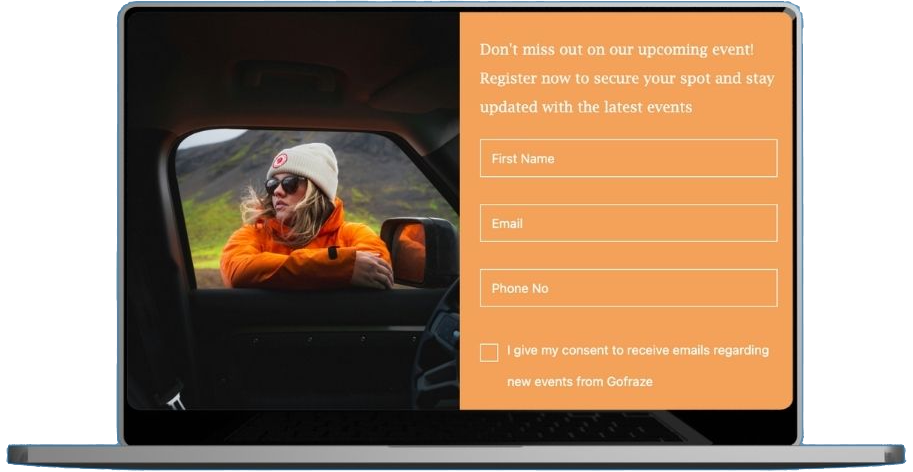Email Marketing for Car Dealerships: Strategies, Ideas & Best Practices
Explore powerful email marketing strategies for car dealerships. Learn to attract, engage, and convert leads into loyal customers with ease.
Have you ever found yourself drawn to the last line of an email, especially when it’s marked “P.S.”? There’s something compelling about a well-placed postscript. It feels like a personal nudge, a secret note, or an extra thought worth paying attention to.
Originally, P.S. (postscript) was a practical tool in handwritten letters and typewritten messages, allowing writers to add additional information after completing their main text. In today’s digital era, it has evolved into a strategic element in email marketing, professional correspondence, and personal communication.
In this guide, we’ll explore the purpose and significance along with How to Write a P.S. in an Email, when to use it effectively, and best practices to make it a powerful addition to your emails.
A P.S. (postscript) is a short note placed at the end of an email, after the signature. It serves multiple purposes, such as emphasizing key information, reinforcing a call to action, or adding a personal touch.
While the main body of an email contains the core message, a P.S. acts as a strategic afterthought. It can highlight crucial details, create urgency, or make an email feel more personal and engaging.
Marketers, sales professionals, and business communicators often use a P.S. to improve email engagement rates. Since many readers skim emails rather than reading them in full, the P.S. can effectively grab their attention, ensuring that essential information is noticed before they close the email.
A P.S. is an excellent tool for emphasizing critical details. Since it appears at the very end of an email, readers’ eyes naturally land on it, making it a prime spot to reinforce essential points.
For example, if you’re sending a promotional email, the P.S. can remind the reader of a limited-time offer. If you’re sharing an update, the P.S. can highlight a crucial deadline or event date.
Example:
P.S. Don’t forget—our early bird discount ends tonight at midnight! Grab your spot now before prices go up.
In marketing and sales emails, a call-to-action (CTA) is crucial for encouraging the recipient to take the desired next step. A well-crafted P.S. can reinforce the CTA without making the email feel too pushy.
By placing the CTA in the P.S., you ensure that even those who skim the email see it. This subtle yet effective reminder increases the likelihood of engagement, whether it’s signing up for a webinar, downloading a resource, or making a purchase.
Example:
P.S. If you’re serious about learning digital marketing, enroll now while spots are still available!
A P.S. can create a sense of urgency or scarcity without making the email sound overly aggressive. Urgency-driven language encourages recipients to act quickly rather than postponing a decision.
This tactic is particularly useful in sales emails, where limited availability or expiring discounts can drive conversions.
Example:
P.S. Only 5 seats left for our exclusive webinar. Secure yours before it’s too late!
Sometimes, a P.S. doesn’t need to sell anything—it can simply make the email feel more human. This approach works well in networking emails, personal communication, and even professional follow-ups.
By including a friendly remark in the P.S., you create a warmer, more conversational tone. It can help strengthen relationships and make the recipient feel valued.
Example:
P.S. Hope you had a great weekend! Let me know if Tuesday works for our meeting.
If your email contains a lot of information, a P.S. can be a great way to introduce an extra detail without overwhelming the main message.
For example, if your email is about a product launch, the P.S. can include a link to a related blog post. If you’re reaching out for a business collaboration, the P.S. can reference a past project as a portfolio example.
Example:
P.S. I just published a new blog post on this topic. Check it out here: [Link].
A P.S. should be brief and to the point. Since it’s meant to capture attention, it shouldn’t be a paragraph-long addition. Ideally, one to two sentences are enough to drive the message home.
A P.S. should feel natural and engaging, not robotic or overly formal. Imagine writing it as if you were adding a quick thought in a handwritten letter. The more personal it feels, the more effective it will be.
If the email is formal, the P.S. should match that tone. If the email is friendly or informal, a P.S. can include humor or a lighthearted remark. Maintaining consistency in tone ensures a seamless reading experience.
To make your P.S. stand out, you can use bold text, italics, or even emojis strategically (depending on your audience). This can help guide the reader’s eye and increase engagement.
Example:
P.S. This is your last chance to grab the early access deal!
A P.S. is effective when used strategically, but adding it to every email can make it lose its impact. Save it for emails where you need to emphasize something important.
Using too many P.S. lines (e.g., P.P.S., P.P.P.S.) can make the email look cluttered and unprofessional. Stick to a single, well-crafted P.S. for maximum impact.
Subject: Your Exclusive Discount Ends Soon!
Email Body:
Hi [Name],
We noticed you checked out our latest collection, and we have a special offer just for you! Use code SAVE20 at checkout for 20% off your next order.
Happy shopping!
Best,
[Your Name]
P.S. This offer expires in 24 hours—don’t miss out!
Subject: Let’s Connect Over Coffee
Email Body:
Hi [Name],
I really enjoyed your talk at [Event Name] and would love to discuss [specific topic] over coffee. Let me know if you’re available next week!
Looking forward to hearing from you.
Best,
[Your Name]
P.S. Hope you’re having a great start to the week!
Subject: Application for [Job Title] Position
Email Body:
Dear [Hiring Manager’s Name],
I am excited to apply for the [Job Title] position at [Company Name]. My experience in [industry/skill] aligns well with your team’s goals, and I’d love the opportunity to contribute.
Looking forward to discussing how my skills can add value to your company.
Best regards,
[Your Name]
P.S. I’ve attached my portfolio for your review—happy to share more details if needed!
Master the art of using P.S. in an email to grab attention, reinforce key messages, and boost engagement effortlessly.
A well-crafted P.S. can make your emails more engaging, persuasive, and memorable. Whether you’re using it for marketing, networking, or personal communication, a strategic postscript can effectively reinforce your message and drive action.

Explore powerful email marketing strategies for car dealerships. Learn to attract, engage, and convert leads into loyal customers with ease.

Learn how to craft the perfect webinar invitation email using key tips, templates, and examples to boost sign-ups and engagement.

Discover winning sports newsletter examples, essential elements, and expert tips to craft high-impact email campaigns your fans will love.

Get unlimited forms that turn your traffic into real subscribers — totally free
Start now - free forever